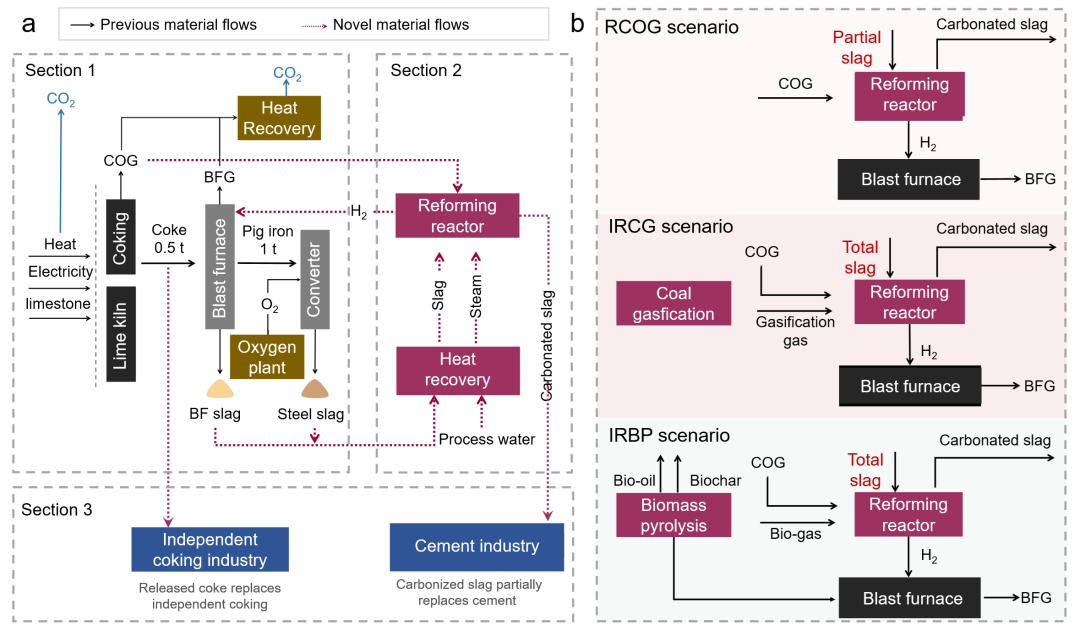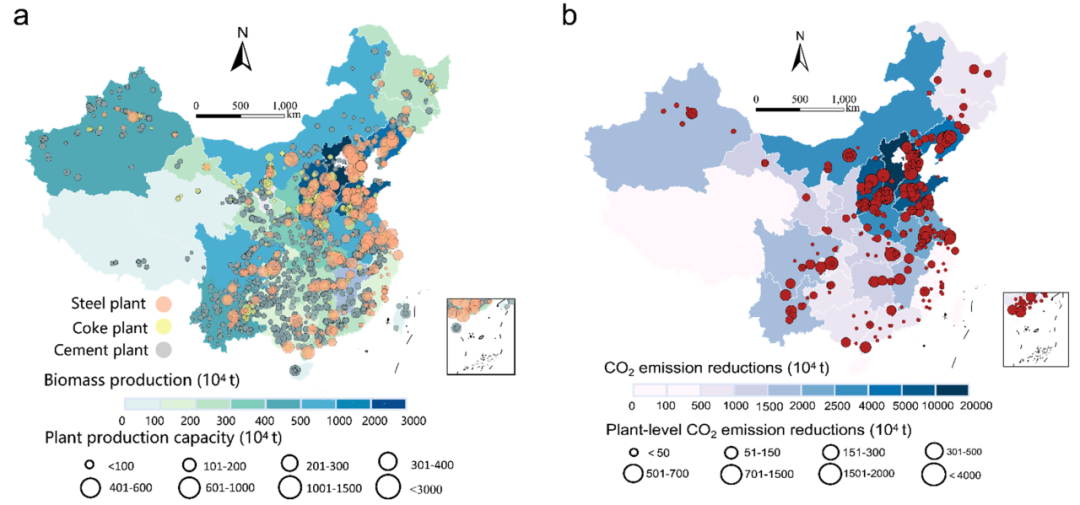Recycling industrial waste resources is crucial for sustainable industrial development. The steel and coking industries contribute to approximately 30% of global industrial carbon emissions. Their by-products—high-temperature molten slag (1600°C) and process tail gases (containing CO/H₂/CH₄)—contain substantial thermal energy and hydrocarbon resources, yet their potential for synergistic material-energy carbon reduction remains underexplored. Recently, a research team led by Professor Lu Xi from the School of Environment and the Institute for Carbon Neutrality at Tsinghua University, in collaboration with Professor Cheng Fangqin’s team from Shanxi University, achieved important advances in enhancing resource efficiency and carbon reduction through industrial waste utilization. The team developed a dynamic hybrid assessment model integrating chemical, environmental, and economic dimensions, constructed a point-source dataset covering 361 steel plants, 331 coking plants, and 1,531 cement plants across China, and established a spatial matching model. This framework systematically quantified the synergistic decarbonization potential of coke oven gas and waste slag, clarifying the carbon reduction opportunities within the coal-coking-metallurgy-construction-chemical industrial chain under current industrial layouts and resource constraints.

Figure 1. Technical pathway and industrial symbiosis model of gas-slag synergistic recycling
The study established an energy-material circulation system integrating "slag heat recovery-adsorption reforming-blast furnace injection-building material utilization" through adsorption reforming technology. By synergistically regulating gas-slag components and coupling energy and material flows, the research overcame the limitations of traditional single-mode gas/slag recycling, increasing carbon reduction potential from 15–28% to 48%, and solid waste utilization rate from 30% to 65%. Based on this framework, the symbiotic potential within China’s coal-coking-metallurgy-construction-chemical industry was assessed, revealing a carbon reduction potential of 63–92%. Under existing industrial layouts and resource constraints, the gas-slag synergistic recycling technology is particularly suitable for coal-based industrial clusters, enabling enhanced resource efficiency and carbon reduction.

Figure 2. Point-source emission dataset and carbon reduction benefits
The research constructed a "tail gas-molten slag synergistic recycling system" and proposed a phased decarbonization roadmap, quantitatively evaluating the deep carbon reduction potential of endogenous energy-material circulation in coal-based industries. This work provides important insights for the low-carbon transition of high-carbon industries and the development of a circular economy.
The related findings, titled "Synergistic gas-slag scheme to mitigate CO₂ emissions from the steel industry," were published in Nature Sustainability on May 28. Professor Lu Xi from Tsinghua University and Professor Cheng Fangqin from the Institute of Resources and Environmental Engineering at Shanxi University are the corresponding authors. Associate Professor Di Zichen (postdoctoral fellow at Tsinghua University) from Shanxi University is the first author. Other co-authors include Dr. Wang Yanxia, Master’s student Chang Chenggong, and Professor Song Huiping from Shanxi University.
The research was supported by the National Natural Science Foundation of China Regional Innovation and Development Joint Key Project (U21A20321), the National Science Fund for Distinguished Young Scholars (72025401), and the Carbon Neutrality and Energy System Transformation (CNEST) Program, among others.
Paper Link:
https://www.nature.com/articles/s41893-025-01572-2
 Latest recommendations
Latest recommendations


